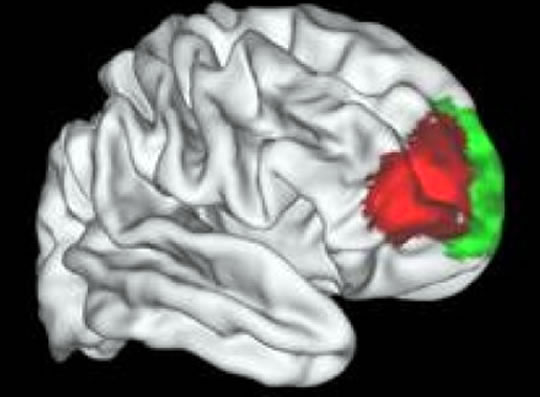First study to compare human and monkey brains with modern MRI methods reaches fascinating conclusions.
Researchers at Oxford University have pinpointed an area of the brain that is uniquely human–perhaps part of what gives us our higher cognitive powers and separates us from monkeys.
The area, in red above, part of the ventrolateral (at the front and side) frontal cortex, is likely to help us plan for the future, learn things from others, behave flexibly, along with other complex tasks.
To reach these conclusions, Neubert et al. (2014) compared brain imaging–both structural and functional–from healthy human volunteers with that from macaque monkeys.
This allowed them to build a picture both of the brain’s structure and how the different areas interact.
Professor Matthew Rushworth, one of the study’s authors, likened the brain to a mosaic of tiles:
“The brain is a mosaic of interlinked areas. We wanted to look at this very important region of the frontal part of the brain and see how many tiles there are and where they are placed.
We also looked at the connections of each tile–how they are wired up to the rest of the brain–as it is these connections that determine the information that can reach that component part and the influence that part can have on other brain regions.”
The ventrolateral prefrontal cortex was then divided up into 12 areas, 11 of which were connected up in very similar ways in both humans and macaque monkeys. This shows some of the striking similarities between the brains of humans and monkeys.
The 12th area, though, in the lateral frontal pole, had no equivalent in the macaque monkeys, and may represent a uniquely human aspect of our brains.
The study’s lead author, Franz-Xaver Neubert, said:
“We have established an area in human frontal cortex which does not seem to have an equivalent in the monkey at all. This area has been identified with strategic planning and decision making as well as ‘multi-tasking.'”
The researchers also found that the auditory areas of the human brain were very well connected with the prefrontal cortex in comparison with the monkeys. This may underlie our advanced language skills.
Image credit: University of Oxford

